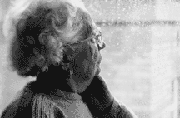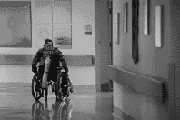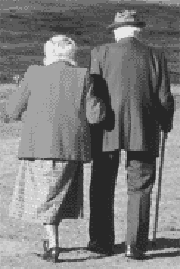Nursing Home Abuse and Neglect
In a nutshell, nursing home liability tragically revolves around two themes:
1. the less staff a nursing home hires, the more money it makes, and
2. the less staff a nursing home hires, the more likely the chance of catastrophic injury or death.
All of us will eventually face the hard and wrenching decision of how to care for our aging loved–ones. You may have arranged to care for them yourself, at home, among family and familiar surroundings. But the best–laid plans are sometimes confounded by medical circumstances that would legally prohibit you from rendering care, no matter how good your intentions are. For instance, certain laws prohibit the dispensing of prescriptions without a license, and the elderly may develop other medical problems that are best treated in a licensed health care facility.
"Nursing Home Litigation" involves complaints of abuse and neglect suffered by the elderly while they are residents in a nursing home. Years ago, such cases were considered rare, but evidence of the incidence of neglect –– and the public's awareness –– has risen dramatically in the last ten years. In March of 1999, the General Accounting Office of the U.S. Government released a study showing that more than 25% –– one in four –– of nursing home residents are either harmed, or put at risk of serious injury or death as the result of poor quality and safety practices, or a failure to adhere to regulatory standards.
What you need to look for
Nursing home staff are generally underpaid. The persons responsible for carrying out the directives of physicians and RNs are usually paid minimum wage or just above it. These persons are often responsible for cleaning, bathing, turning, feeding, and answering the call buttons of persons confined to a nursing home. And, not being able to care for themselves, sometimes not being able to roll over, or even speak, the nursing home residents are often at their mercy. "I don't get paid enough to do that," has been overheard by the family members of at least one nursing home resident. Because of the staggering evidence of abuse at nursing homes, you must take affirmative action yourself and become ever–vigilant for signs of neglect.
Some things to look for are:
1. Are the medications being administered appropriately?
This includes pain medication. Is it being given as it should? It is abuse not to provide pain medication for a person who is in pain –– especially when they cannot themselves demand it.
2. Is your loved–one receiving appropriate nutrition?
Evidence of a lack of nutrition is weight loss or dehydration, and oftentimes the best evidence of a lack of nutrition is to compare the patient's weight on admission to what their weight is now. Remember that many nursing home residents must be fed slowly to allow them to finish their meals and receive the appropriate nutrition. Understaffing often leads to a rushed and careless approach to feeding. If a patient eats less than 75% of their food, regulations require that the doctor be notified. Has this been done? If not, why not? If the doctor has been notified, what steps is he or she taking to ensure proper nutrition?
Effects of protracted malnutrition (starvation) are:
Apathy;
Fatigue;
Frequent urination;
Hypothermia;
Retardation;
Reduced resistance to infection.
Does your family member or loved one exhibit any of these signs or symptoms? If so, DEMAND AN ANSWER.
3. "Bed Sores" – Pressure or Decubitus Ulcers
Even the healthiest of individuals, if confined to a bed for more than a week, is at great risk for developing bed sores, also called pressure ulcers. For those elderly and disabled patients who are unable to turn themselves in bed, the risks for developing these sores increases dramatically. In skilled nursing facilities, an estimated 23% of patients suffer pressure sores. (National Pressure Ulcer Advisory Panel, "Pressure Ulcer Research: Etiology, Assessment and Earl Intervention"). In high–risk categories, including quadriplegics, the numbers increase to 60%. (National Pressure Ulcer Advisory Panel, "Statement on Pressure Ulcer Prevention 1992"). Because most pressure ulcers are preventable, these cases are often ripe for litigation. THE NURSING HOME IS BEING PAID TO ENSURE THAT THE PATIENT IS ADEQUATELY TURNED IN AN EFFORT TO PREVENT BED SORES.
Find out whether or not the physician is being notified appropriately. Once an ulcer occurs and progresses from Stage I through Stage III and IV, every day and shift where there is a failure to notify the physician of the existence of, or changes in, a pressure sore should be documented and detailed. The general rule is that the physician should be notified not only of the development of a pressure sore, but of any change in the condition of the sore.



